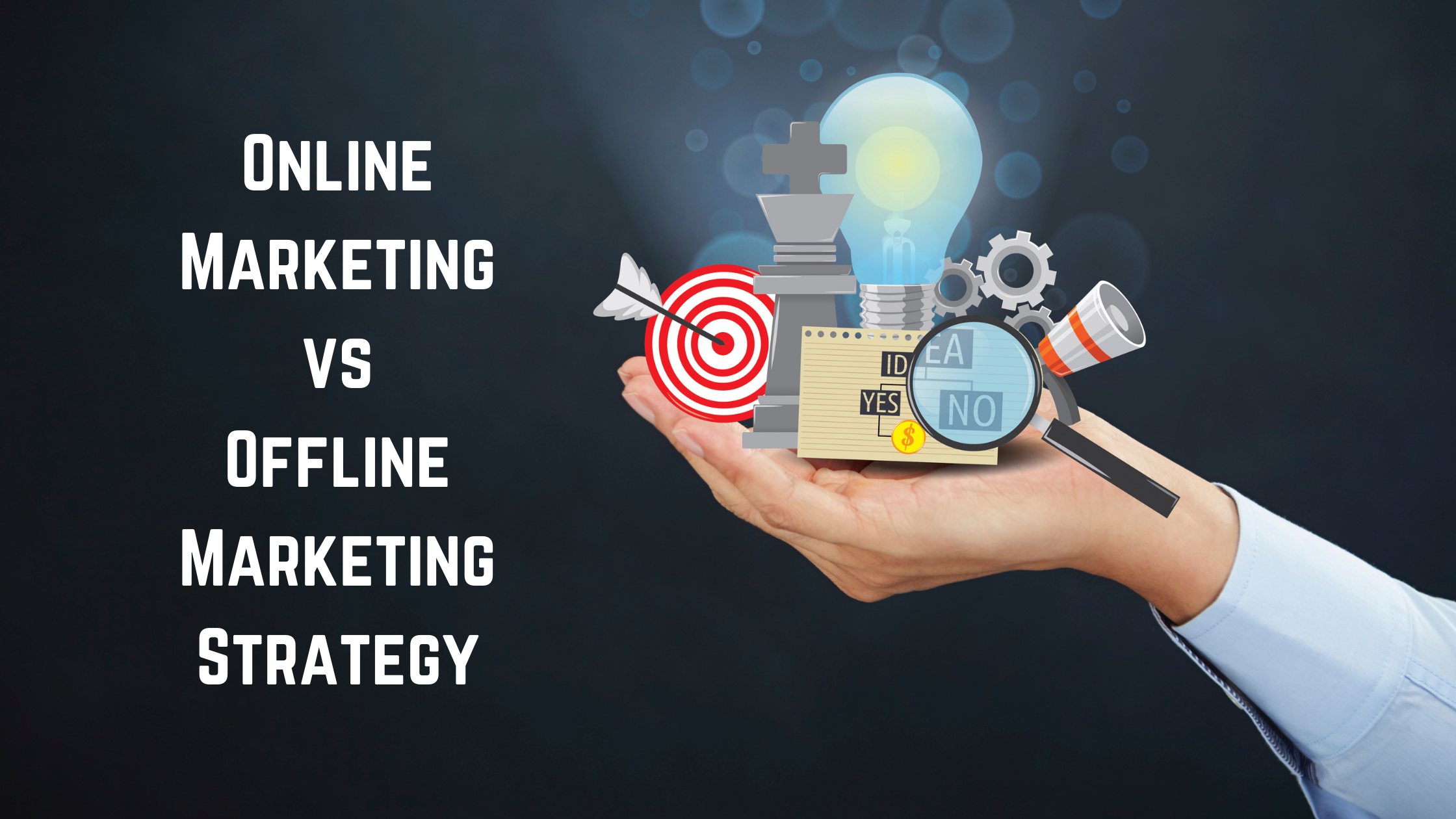For years, companies have promoted their products and brands through various marketing strategies. Times changed, technology came in, communication became easy and markets moved from national to global level.
With the change of time what did not change was the companies’ criteria to promote their products and brands through marketing. But what changed drastically was the marketing strategy which moved from offline marketing to online marketing.
A successful company always makes a wise decision to strike a balance between online marketing vs offline marketing to get the best out of the two worlds and succeed. Before we talk about the need to strike a balance between two types of marketing strategies. Let’s understand different marketing tactics in online and offline marketing.
Online Marketing Vs Offline Marketing
1) Website Marketing –
Companies create their websites which have to be improvised from time to time to increase their chances of being searched the most through (SEO) Search Engine Optimization. This involves creating effective content and making ranking pages that increase relevant traffic hence conversions.
Print Advertising– This involves creating relevant and engaging advertisements that can be placed in print media like newspapers, magazines, brochures, billboards, or direct mail to reach the customer base.
2) Search Engine Marketing (SEM) –
Advertise through search engines like Google, Bing etc by running paid campaigns such as (Pay-per-click) PPC to increase visibility and attract customers.
Broadcast Advertising– Using television and radio as a platform to advertise your products.
3) Content Marketing –
Nowadays customers have become really aware and try to gain maximum information to know about a product before they buy it. Therefore content marketing plays an important role as it talks about the product through blogs, videos, ebooks, podcasts, etc which help customers to decide on the product.
Event Marketing– This method of marketing involves participating in trade fairs, exhibitions, etc, or sponsoring other’s events to showcase their product.
4) Email Marketing –
This method of marketing helps the customers to receive information, promotions, discounts, and schemes of a product from time to time. This helps the customer to remain connected with the company.
Direct Mail Marketing– This is a traditional method of sending information promotions, discounts and schemes, etc to the customers to keep them with the company.
5) Influencer Marketing –
Influencers and content creators definitely leave a long-lasting impact on their audience. So collaborating with influencers for product promotion is definitely one of the best methods.
Telemarketing– Contacting customers by phone for giving information or promoting your products is called telemarketing. It involves cold calling and following up with the leads to get optimum results.
6) Affiliate Marketing –
Affiliates are the agents who promote the company’s product on their website or social media. These agents get paid for the business generated through them.
Public Relations (PR)- Companies maintain business relations with the media, use their platform to give press releases and conduct press conferences to market their product.

7) Display Advertising –
Companies put their ads as banners or side ads on popular websites, social media platforms, or mobile apps to increase their visibility.
Outdoor Advertising– It uses the method of putting billboards, posters, signage, etc. at significant places where it catches the eyes of the public.
8) Social Media Marketing –
Advertising your product through social media such as Facebook, Instagram, LinkedIn, etc. This can be in the form of creatives, videos, reels or content about products to engage customers.
Word of mouth marketing– This has been a traditional method of marketing where people who have used the product give their feedback and encourage others to use the product.
9) Video Marketing –
This involves making interesting informative and engaging videos to showcase on platforms like YouTube, Facebook, Instagram, etc. for customers to let them know about the product.
Traditional Media– Use of newspapers, T.V., radio, etc to showcase your product or give interviews about the launch or success of the product for customers. This helps in creating brand awareness for the product.
10) Mobile Marketing –
Marketing through SMS, mobile apps, etc has become one of the most used marketing methods that helps reach a wider customer base.
Promotional Merchandise– The companies manufacture merchandise like pens, tote bags, keychains etc. which are used as giveaways for the customers. Therefore this helps customers retain the brand for long.
Now when we have talked about online marketing vs offline marketing strategies in detail, let us look at some important factors that explain the need to balance online marketing and offline marketing.
1) Wider Customer Base –
It is not necessary that all the customers use either online or offline mode. So a combination of both these modes helps the company reach out to a wider customer base.
2) Targeting Both Local And International Customers –
Online mode helps us to reach out to the customers in wider prospects. This covers International markets on the other hand traditional marketing helps companies to reach out to local customers who might not be there on the online platform. So a blend of the two helps find prospective customers.
3) Customer Behaviour –
With different marketing modes and competition in the markets, the customer makes his choice after doing extensive research on the product. Some customers prefer online mode while others are more comfortable in visiting the stores physically. Therefore a mix of online and offline marketing is important to help to cater the needs of both kinds of customers.
4) Reinforce Brand Consistency –
Both traditional and online marketing methods play different roles in marketing a product. Online marketing is a more target-oriented marketing that reaches out to prospective customers on the other hand traditional marketing covers a wider segment of customers and builds the brand’s credibility and existence in the market. A blend of the two helps in building customers and building sustainability in the market.
5) Move With Changing Trends –
The consumer behavior is never constant. It changes as per technology change, demographic changes, cultural change,s etc. Therefore adopting a blend of the two methods increases our chances to serve our customers as per their behavior and preferences.
6) Pick The Best Of Both The Methods –
Both online marketing and offline marketing methods have their own advantages. Online marketing is more target-oriented, cost-effective and time-saving on the other hand traditional marketing builds your space and existence and is more personalized as it involves physical preference. So picking the best of both these methods helps you gain customers by making a long-term impact on them. Go-to-market strategy for a brand or product is always a combination of certain types of Online and Offline marketing.
7) Diversifying Risks –
Both online marketing and offline marketing have their risk factors as well. Online marketing is more technology-dependent, so any issue with technology or online platforms can affect our marketing strategy. On the other hand, traditional marketing has a limited reach so relying only on traditional marketing may limit your presence only do local markets. Therefore a mix of the two is required to diversify your marketing risks.

So we see that the blend of the two options in an optimal way can definitely lead to one of the best marketing strategies to market your product. Go-to-market strategy for a brand or product is always a combination of certain types of Online and Offline marketing. This gives us a new word “Phygital marketing”.





